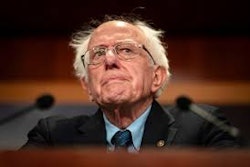International Education
A complex visa process has contributed to a decline in the number of international students coming to the country since 9/11
By Dahna Chandler
In January, Humphrey Tusimiirwe, a native of Uganda, finally realized his dream of pursuing a psychology degree at a U.S. university. What he didn’t realize, however, was how arduous the U.S. student visa process would be. Although Tusimiirwe, 23, submitted the required paperwork and had outstanding recommendations from a U.S. senator, as well as from the president of the University of St. Thomas in St. Paul, Minn., where he was applying to attend, the U.S. Consulate in Uganda denied his application twice. They asserted that Tusimiirwe — who is single, owns no property and has only one living parent — was denied because he could not prove he had enough social and economic ties to Uganda that would make him return after obtaining his degree.
“It’s ridiculous to make those things considerations for granting visas to students since most don’t have a spouse, children or property,” Tusimiirwe says of a process that he believes weeds out those who can’t or don’t persevere.
Tusimiirwe says he didn’t contemplate giving up even though each denial meant re-applying and driving 40 miles before dawn to Uganda’s capital, Kampala, and waiting in line and paying additional fees for a two- or three-minute interview. The interviews, which are held in an open room where all present can hear the proceedings, are humiliating, says Tusimiirwe, who began the visa process in July 2003 hoping to enter St. Thomas that fall. Fortunately for Tusimiirwe, U.S. Sen. Norm Coleman, R-Minn., whose son also entered the university in September, intervened, and Tusimiirwe got a one-year visa. But even Coleman had to make two attempts to sway reluctant consular officials.
It is this visa process, along with perceptions that a post-Sept. 11 America is unwelcoming, not to mention fierce competition from non-U.S. schools, that is driving declines in international student enrollment in U.S. colleges and universities.
“These are really smart students, accepted at universities all over the world, wanting to come here because a U.S. university education is best,” says Tusimiirwe. “But the visa process is grueling and discouraging, so many just go to schools in Australia or Europe.”
And because attending institutions outside of the United States is easier than navigating the U.S. visa process, schools in countries such as India and China aggressively market to international students to bring their intellect, work ethic, skill and tuition money to their schools, says Heath Brown, director of research and policy analysis at the Council of Graduate Schools.
Endurance and Then Some
Tusimiirwe’s experience is hardly unique among international students and scholars who want to enter the United States to study and conduct research.
“In particular, always travel-oriented West Africans find the West an attractive destination, and most Africans want an American education enough to endure the visa process,” says Nancy Keketu, a regional educational advising coordinator for NAFSA’s OverSeas Educational Advisers based in Ghana.
While students from other parts of the globe have also been affected by post-Sept. 11 visa policies, “Getting visas in Africa is no harder than it’s always been,” says Keketu, an African American who has lived in the West African country for 28 years. She remains optimistic about her students and scholars obtaining visas, but she expects the Sept. 11-related difficulties that students in China, India and Korea are experiencing to begin to affect Africa in the next few years. She is concerned about seeing the discouragement among her students who generally only get visas if accepted into elite U.S. institutions.
But Department of Homeland Security (DHS) officials defend tightened visa requirements, saying that the war on terrorism makes such heightened restrictions necessary. Accordingly, DHS launched the Student and Exchange Visitor Information System (SEVIS) in 2002. Used by immigration and customs enforcement to track and monitor foreign students and scholars issued F-1 visas to study in the United States, SEVIS now collects and manages information on 730,000 international students and scholars at 8,700 approved schools and programs nationwide.
But obtaining visas through this complex system is fraught with delays, inconsistent methods for application screening and denials for arbitrary reasons. Students and scholars with short-stay visas, like Tusimiirwe, must return to their home countries to renew their visas. Those who visit family sometimes must reapply for U.S. re-entry to continue programs in which they’re already enrolled. The process is multi-tiered, different countries have different rules for family members of married students, for students who don’t have scholarships who have the additional burden of proving the ability to pay for their entire program, and other regulations based on area of study.
For example, scholars coming to the United States to do scientific research go through the more rigorous Visas Mantis, which intensely scrutinizes those involved with sensitive technologies. In some countries, getting an interview for that process can take up to 12 weeks.
Once at U.S. universities, scholars from countries designated as “repeatedly providing support for acts of international terrorism,” face enhanced surveillance under the 2001 USA Patriot Act. Moreover, The Bioterrorism Preparedness and Response Act of 2002 Patriot Act provides strict reporting requirements to the U.S. Attorney General for scholars from those designated countries handling biological agents or other materials used to create weapons.
“Many persevere to go through this process because two-thirds of current research is done here in the U.S. and that’s enticing to international students who want access to new materials and new technologies,” says Tusimiirwe, who intends to pursue graduate work in industrial psychology.
But declines in the enrollment of international students and scholars in U.S. postsecondary institutions show fewer have the perseverance to go through the process as they feel “caught in the quagmire” between the United States and the rest of the world, Tusimiirwe says. Rather, many foreign nationals, particularly from Islamic nations where the enrollment drop has been steepest, perceive the legal restraints placed on international students as discriminatory. Some believe the new laws actually increase potential terrorism against the United States, since the attendance of fewer international students and scholars in U.S. institutions creates barriers to understanding other people and cultures.
Foreign Investment
“[I]t is in our interest for future foreign leaders to come to the U.S. to get an American education, learn American values, and develop life-long friendships with Americans … the 9/11 Commission specifically recommends that the U.S. … rebuild its scholarship programs,” says Sen. Coleman of Minnesota.
However, the impact of these drops in enrollment is not only political, but also economic.
Though comprising just 4.6 percent of the U.S. higher education population, these nearly 600,000 international students and scholars contribute approximately $13 billion to the U.S. economy. According to the U.S. Department of Commerce, the American education system is the country’s fifth largest service sector export. Moreover, two-thirds of international students and scholars are self-funding, with nearly 75 percent of all international student-funding coming from sources outside of the United States.
“It is self-funded students who struggle most obtaining visas because, unlike those sponsored by large research institutions or multinational businesses, they must navigate the visa process virtually unsupported,” says Karen Jenkins, president of Brethren Colleges Abroad. Yet, their contribution to some states, like California and New York, is over $1 billion annually and in many states, the revenue they generate outstrips that of professional sports.
Thus, declines in enrollment are deleterious to state economies, as well as institutions, particularly at the graduate level for teaching. Also affected are research assistants, medical and dental residents, technical staff, scientists, professors, physicians, pharmacists and a myriad of other professionals staff graduate programs and teaching hospitals. Surveys completed by leading international exchange and higher education organizations show institutions nationwide reporting declines.
In the 2003 online survey of international education professionals for the Institute of International Education’s “Open Doors” report, 45 percent of respondents indicated drops in international student and scholar enrollment at their institutions. Moreover, 59 percent cited visa restrictions as an issue with just 21 percent citing economic concerns by students.
But many international education professionals believe the $100 SEVIS fee students must pay prior to each visa applicant interview with the U.S. Consulate in their home country, exacerbates the problem. “Paying this fee in U.S. dollars is especially difficult for students coming from developing countries with poor economies and limited access to foreign exchange,” Jenkins says.
The 2004 “Open Doors” report, to be published later this month, is expected to show more decreases in international student and scholar matriculation during 2003-2004. Further, a survey released in September by the Council of Graduate Schools showed large declines at nearly all institutions, across all fields, and many countries of origin. Driven by falling applications from “feeder” countries like India, China and Korea, 90 percent of respondents reported decreased applications to graduate programs, with an overall decline of 18 percent in acceptances to programs. Many may be opting for competing non-U.S. programs, according to the report.
“The declines reflect students and scholars experiencing substantial difficulty obtaining visas and deciding it’s not worth the hassle or uncertainty in the process,” says Dr. Nancy Zingale, executive assistant to the president at the University of St. Thomas, the Rev. Dennis Dease, and professor of political science. While hardly a brain drain, Zingale says, attendance from abroad is drying up and schools need to make up those lost dollars in their bottom line.
“The reduction in international students is already having an effect, and that shortfall will be passed to our families, who are already struggling with ever-increasing tuition costs,” says Coleman. The Minnesota senator sponsored S. 2715, the International Student and Scholar Access Act in July, aimed at making the visa process easier to navigate. To bring foreign students back to American colleges and universities, the legislation calls for the Departments of State, Commerce, Education and Homeland Security to develop a strategic plan, similar to those implemented by the United Kingdom, Canada and Australia, to attract them.
“We cannot afford to continue to watch this sector of our economy diminish and need to take proactive measures now to bring it back; this is also about jobs. And, by bringing in qualified foreign students and the investment dollars that come with them, we also help contain the cost of higher education for American students studying at home,” Coleman says.
© Copyright 2005 by DiverseEducation.com


















